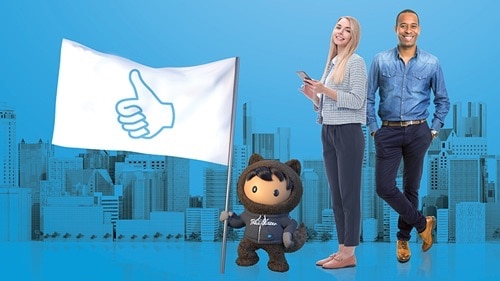I’ve been attending enterprise sales kickoffs (SKOs) for 20 years. Along the way, I’ve learned these meetings can be an incredible tool – or they can fall incredibly flat in engaging and inspiring sales reps.
Sales leaders, you know what I’m talking about: those kickoffs that feel like a wall of meetings with limited interaction, inspiration, or lasting value.
Fortunately, the best sales kickoffs tend to have five things in common. These SKOs are impactful long after sales reps fly home. In this post, learn how we define a modern sales kickoff, followed by the top five features every sales leader should include in their team’s best kickoff ever. Looking for an even deeper dive? Check out our interactive sales kickoff guide.
What does SKO stand for, and what is a sales kickoff?
First, let’s get on the same page with a definition. SKO stands for sales kickoff. A sales kickoff is a meeting for a company’s sales teams, typically held in January or February at the beginning of the fiscal year. In this meeting, sales leaders get everyone on the same page for how they’ll grow business in the new year. It’s the perfect chance to:
- Celebrate the previous year’s wins
- Share goals for the new year
- Align sales reps on how to grow the business
Whether you have a small sales team or thousands of reps, your kickoff should excite and empower them to make their best numbers yet. Now, let’s dive into the five things your epic SKO needs.
Sales kickoff must-have #1: Measurable goals
What do you want every attendee to walk away with? Your sales team should go home with a clear understanding from their leaders of what success looks like in the year ahead. That’s why every sales kickoff must communicate measurable goals.
Be sure to include both long- and short-term goals. That way, your sales team understands the big picture but also knows how their day-to-day actions influence success.
Check out these example goals from Salesforce’s sales team in years past. Get more insight into how Salesforce sets goals with our V2MOM process.

Sales kickoff must-have #2: The right people
Every sales kickoff needs the right people in the physical or virtual room. That likely includes folks outside your sales team who influence customer experience.
For example, at a typical SKO, we invite:
- All sales and sales development teams
- All solution engineering managers
- Select customer success managers
- Select industries and partner team managers
Choose the right attendees for your company’s unique structure and selling goals.
Sales kickoff must-have #3: The ideal agenda
Setting an SKO agenda is probably the hardest part of planning. What do you prioritize? In this case, it’s all about quality over quantity. The ideal kickoff agenda creates a high-quality schedule by balancing three areas: product enablement, selling skills, and customer acumen.
Your agenda should encourage networking and celebrate your company’s culture. Common agenda items at sales kickoffs include inspirational keynotes, fun team-building events, awards celebrations, panels, and volunteering. Creating a sales kickoff agenda is a huge topic, so stay tuned for an upcoming post in this series for a closer look at the right kickoff agenda.

Sales kickoff must-have #4: Compelling content
Your sales team is a smart, savvy group. Don’t put them to sleep with a thousand slides. Follow these tangible tips to make your kickoff content so interesting, attendees will put away phones and truly listen.
- Ask presenters to use unexpected facts, personal stories, and lots of visuals. That often means fewer words on slides.
- Think outside the traditional presentation box. Panels, videos, and real-time hackathons will keep things interactive.
- Include your #1 stakeholder: customers. Feature them in panels or focus groups so salespeople can hear what matters most.

Sales kickoff must-have #5: Ongoing learning
A SKO is only as good as its results. The learning shouldn’t stop once the last speaker turns off their mic.
One easy but often overlooked way to get more ROI from that SKO: capture content. You can get as fancy as your budget and time allow. On the more sophisticated side, livestream everything and invite global participation. On the easier side, create session cheat sheets and offer presenter slide decks to all.
Another way to keep the learning going is to plan follow-up kickoffs and trainings with smaller teams, like regional or product-specific groups. At Salesforce, we also use Trailhead to encourage ongoing education.
Finally, don’t forget to collect feedback. Come October or November when you’re planning next year’s kickoff, feedback will be your best friend. But even before that, sales kickoff feedback may reveal deficiencies or insights you can act on immediately.
Get more SKO tips
It’s one thing to have a kickoff. It’s quite another to have an event that inspires your sales team for months to come.
Beyond these five introductory must-haves, we’ve collected much more kickoff advice from global sales leaders in our interactive guide, How to Plan the Ultimate Sales Kickoff. Read proven tips and watch in-depth videos for your best sales kickoff ever.


























